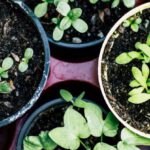Maintaining a lush and vibrant garden while conserving water is a pressing concern for many gardeners. Implementing a water-wise garden schedule is crucial in ensuring that your plants thrive while minimizing water usage. By following a few key practices and strategies, you can create a sustainable garden that is both beautiful and environmentally friendly.
Understanding Your Garden’s Water Needs
Before creating a water-wise schedule for your garden, it’s essential to understand the water requirements of your plants. Different plants have varying water needs based on factors such as their species, size, and growth stage. By categorizing your plants based on their water requirements, you can create a more efficient watering schedule that meets the needs of each plant without wasting water.
Grouping plants with similar watering needs together can help you optimize your watering schedule. For instance, drought-tolerant plants such as succulents and cacti require less frequent watering compared to thirsty plants like ferns and annual flowers. By organizing your garden based on these categories, you can water more strategically and avoid overwatering certain plants.
Implementing Water-wise Irrigation Methods
In addition to understanding your plants’ water needs, choosing the right irrigation methods can significantly impact your garden’s water efficiency. Drip irrigation systems are a popular choice for water-wise gardening as they deliver water directly to the plant’s root zone, minimizing evaporation and runoff. Drip systems can be customized to deliver the right amount of water to each plant, ensuring efficient water usage.
Mulching is another effective technique for conserving water in your garden. Applying a layer of organic mulch around your plants helps retain soil moisture, reduce evaporation, and suppress weeds. Mulch also helps regulate soil temperature, creating a more stable environment for plant roots. By incorporating mulching into your garden maintenance routine, you can reduce water waste and promote healthy plant growth.
Monitoring Soil Moisture Levels
One of the key aspects of a water-wise garden schedule is monitoring soil moisture levels to ensure that your plants receive adequate hydration without overwatering. Overwatering not only wastes water but can also lead to root rot and other plant diseases. By using a soil moisture meter or simply observing the soil’s moisture content, you can determine when it’s time to water your plants.
It’s important to water deeply but infrequently to encourage deep root growth and drought resistance in your plants. Instead of frequent shallow watering, which can lead to water runoff and shallow root systems, aim to water your plants thoroughly less often. This approach encourages plants to develop stronger root systems that can access moisture deeper in the soil, reducing their reliance on frequent watering.
Creating a Water-wise Maintenance Routine
Maintaining a water-wise garden schedule requires consistent effort and attention to detail. Regularly inspecting your plants for signs of stress, adjusting your watering schedule based on weather conditions, and incorporating water-saving practices into your gardening routine are essential steps in creating a sustainable garden.
Incorporating water-saving technologies such as rain barrels or greywater systems can further enhance the efficiency of your garden’s water usage. Collecting rainwater for irrigation or reusing household water for gardening can help reduce your reliance on potable water sources and lower your water bill. By exploring these innovative solutions, you can elevate your water-wise gardening efforts and create a more sustainable outdoor space.
Embracing a Water-wise Lifestyle
In conclusion, implementing a water-wise garden schedule is not just about conserving water—it’s about embracing a sustainable lifestyle that benefits both your garden and the environment. By understanding your plants’ water needs, choosing efficient irrigation methods, monitoring soil moisture levels, and creating a water-wise maintenance routine, you can create a thriving garden that conserves water and promotes plant health.
By incorporating these practices into your gardening routine, you can enjoy a beautiful and sustainable outdoor space that reflects your commitment to water conservation. With a little effort and dedication, you can transform your garden into a water-wise oasis that thrives while minimizing water usage.





